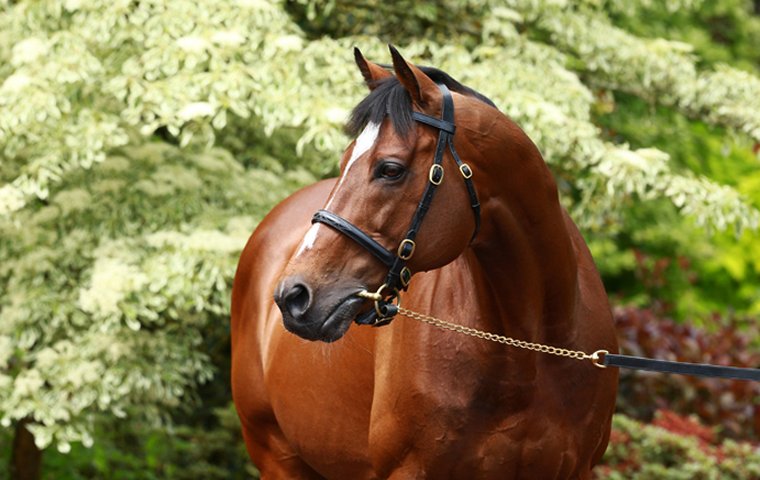
Apart from the primary purpose of producing the rankings each week, TRC Global Rankings data can be put to some interesting tasks. Here, we use it to interrogate one of the obvious aspects of the rankings – the dependency between individuals in each category on those in other categories; the degree, for instance, to which world #1 trainer Aidan O’Brien’s results are a product of him being sent horses by word #1 owner Coolmore Partners who are sons of world #1 sire Galileo and ridden by world #1 rider Ryan Moore.
We try to express who truly is the most important chain in the link by means of rankings points, which are designed to be comparable across categories simply because they represent real-life parameters of the success of each individual in Group and Graded races across the world, adjusted to provide a ‘context-neutral environment’ – a pan-global level playing field, in other words.
In the latest rankings, O’Brien has 1084 points in the trainers’ rankings, Coolmore Parners have 1122 points in the owners’ category, Galileo has 1071 points in the sires’ ranking and Ryan Moore has 1111 points in the jockeys’ rankings. So, according to these numbers, Coolmore Partners are the most important link, followed by Moore, O’Brien and Galileo.
‘With Or Without You’
However, while this represents the relative level of their success, their results are so strongly dependent on each other that the sample of runners does not allow the maths to separate out their true contributions. So, we simply cannot assert which is the strongest link and which the weakest.
Is it Galileo? One of the least realised aspects of Thoroughbred racing among those with only a passing interest in it is the influence of the sire. If human connections get their hands on superior stock, it is a massive advantage.
To this end, we thought it might be interesting to conduct what is called in other sports ‘WOWY’ analysis – standing for With Or Without You: let’s see how leading owners, trainers and jockeys do with or without the dominant sire with whom they are associated.
The world’s top ten owner-sire combinations since 2011 (by number of Group and Graded race wins) are summarised in Table 1:

This is the way to read the data: Coolmore Partners have had 146 Group and Graded winners sired by Galileo (red) and 206 winners by other stallions (blue). So, 41.5 percent of all their Group and Graded winners are by Galileo (shaded in grey). Godolphin have had 30 Group and Graded winners sired by Dubawi (red) and 424 sired by other stallions (blue), So, only 6.5 percent of all their Group and Graded winners are by Dubawi (shaded in grey).
What these numbers are telling you is that Galileo is contributing a lot more to Coolmore's sucess than Dubawi is to Godolphin's; Godolphin has a much more diverse portfolio of sires, so there is less depending on any one.
Imagine the dystopian idea that Coolmore and Godolphin were denied their respective leviathan sires. In theory, the blow would be considerably greater to Coolmore – even a basic understanding of the numbers says that. But, hold on just a second there, as Columbo used to say, because Galileo’s success is dependent on a factor we don’t measure directly in TRC Global Rankings: the quality of his book of mares.
If Galileo were not around, his broodmare band would probably be distributed among other sires at Coolmore who are his sons. It is highly likely they would not do as well at Galileo, but they would likely do a lot better than previously by dint of this trickledown effect. Some of the slack can and will be picked up when the time comes.
Now, what about the relationship between trainers and sires? Table 2 condenses this information for the top ten trainer-sire combinations since 2011 (by number of Group and Graded wins):

Not surprisingly, Aidan O'Brien's dependency on Galileo (55 percent of his Group and Graded winners) is even stronger than Coolmore's because the latter has other horses around the world. You should be able to see the problem with separating out individual contributions here.
What the numbers prove in general – which should be a salutary lesson to those investing millions at the autumn yearling sales – is the degree to which a stallion’s numbers do depend on a few superior runners, in some cases.
Many racing statistics have the same problem of being dependent on other factors that may confuse clear analysis, and sometimes lead to downright faulty inference.
Laying out tables, like we have done here, in which the attempt is to condition one variable’s effect on another (a sire’s potency relative to a trainer’s skill) is difficult, but by no means impossible. (In statistics, this is a common problem called ‘multicollinearity’.)
But, whoever is the most powerful link in the chain of success, the distribution of powerful sires around the world exerts a very strong influence on how results play out.


